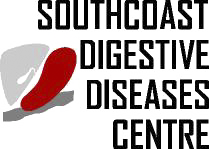Management of Diverticulosis
Since the initial description of the diverticulosis of the colon in mid-1800, these saccular protrusions of the mucosa and submucosa of the colon through the bowel wall have progressively assumed more clinical importance over the 20th century and has become a common gastroenterological problem in the aging population.
Epidemiology: The prevalence is estimated at 80% in people aged over 80 (1). Men and women are equally affected. Seventy percent are asymptomatic. Approximately 25-30 % develop diverticulitis. Diverticulosis of the left colon (sigmoid and descending ) is most commonly encountered in the Western countries with low fibre intake. Diverticulosis is rarely seen in the right colon (Ascending) in some Asian countries with high fibre intake. Symptomatic presentation rapidly increases with aging.
Pathogenesis: Diverticulosis are false diverticulae created by herniation of colonic mucosa and submucosa through muscle layers of the colonic wall as a result of increased intraluminal pressure created by hypersegmentation which is believed to be the result of low fibre intake.
Diagnosis
History: Classically, a pain in the left iliac fossa and a change in bowel habit such as episodic diarrhoea and or constipation are reported. Patients often describe pas- sage of stool like pebbles. Some patients present with history of bleeding from the bowel. Not uncommonly bloating, belching and discomfort half an hour to an hour after meals is all that is described. Dysuria is an uncommon symptom.
Examination: Tenderness in the left iliac fossa and the suprapubic region is the most common finding. Masses are rarely felt in cases of diverticular inflammatory process. Febrile illness is rare even with complicated diverticulitis.
Laboratory: Blood tests are often normal. White cell may be elevated with complicated diverticulitis.
Radiology: CT scan demonstrate severe diverticulosis with bowel wall thickening and any associated abscess etc. CT is not very sensitive for mild to moderate diverticulosis without complications.
Colonoscopy: Should, preferably, be performed 4-6 weeks after treatment to determine the extent of disease and to exclude inflammatory bowel disease and neoplasia.
Complicated diverticulosis: Seventy five percent present with uncomplicated diverticulitis and respond to conservative measures. However, some 25% are com- plicated by ulceration, diverticular disease associated colitis, bleeding, abscess, perforation , fistulae and stricture formation.
Treatment
Uncomplicated diverticulitis: These patients respond to bowel rest with clear fluids orally, oral or i.v. antibiotics such as a combination of ampicillin and metronidazole for 7-14 days. Clearly these patients can be treated as out patients. Complicated diverticulitis: Having established the complicated nature such as abscess with a CT scan, conservative treatment e.g.,i.v. hydration, antibiotics and bowel rest is embarked upon. Surgical resection is considered if an earlier radiolog- ical drainage procedure for the abscess has failed. These patients require inpatient management for monitoring and may settle with conservative measures combined with radiological drainage procedure.
Indications for surgery(2):
Absolute: peritonitis with or without free intra-abdominal air, abscess with prior failed radiological drainage, fistulae, stricture, failure to respond to medical treat- ment, 4 or more attacks in 12 months and inability to exclude carcinoma.
Relative: Symptomatic stricture (usually in the sigmoid), immuno-suppression, right sided diverticulosis, young patient (45 or less) with recurrent severe attacks.
Diverticular bleeding: is the most common cause of bleeding from the large bowel and is seen in 15% of patients with diverticulosis. Bleeding could be massive in a third of these bleeding patients. Bleeding stops spontaneously in 75%. The remaining require colonoscopic , surigical or angiographic intervention. Surprisingly, in at least 50% of these, bleeding occur from the right sided (ascending) diverticular disease.
Prevention of complications of diverticulosis: Studies (3) have demonstrated encouraging early results from the use of salicylates (mesalazine) and calcium channel blockers for the prevention of complications in patients’ who have had two or more attacks . The role of probiotics are being investigated also.
References:
- Friel CM et al: Clinical Perspective in Gastroenterology 2000;3(4),187-197.
- Young-Fadok C et al: In Textbook of gastroenterology, Ed Tamada T,2003,4th Ed,1843-1863.
- Tursi A :Gastroenterology 2004,127(6),1-5.
Editorial: update on GI bleeding and Anti- coagulation
While my last editorial on the combination of Aspirin and Clopidogrel has stimulated animated lively discussion, world’s largest body of GI endoscopists ASGE (Americal Society for Gastrointestinal Endoscopy) has just released its guidelines for the management of antiplatelet agents and warfarin for patients requiring endoscopic procedures(1). There appears to be clear evidence that antiplatelet agent { P2T antagonists e.g., Ticlopidine(3) and Clopidogrel and IIb/IIIa receptor antagonists(2)} could double the risk of major haemorrhage. Thankfully, no increase in cerebral haemorrhage or fatal bleeding was reported. Also previous history of GI bleeding was associated with 30% risk of GI bleeding in 3 yr after commencing warfarin alone. I believe, for patients on a combination of Aspirin and Clopidogrel /Warfarin, a proton pump inhibitor (PPI) should be used as long as the patient requires aspirin. PPIs provide substantial protection against Aspirin and NSAIDs. For endoscopic procedures, depending on the risk of the underlying cardiac/ vascular condition, antiplatelet agent/ warfarin should either be stopped or “bridged” with heparin in consultation with the physician/surgeon who started these agents in the first place. I hope to bring you the absolute latest on this topic from the Digestive Diseases Week to be held in Chicago this May.
References
- Policy and Procedure Manual,ASGE,2005
- The EPIC investigators:N Eng J Med 1994;330:956-61
- Leon MB et al:N Eng J Med 1998;339:1665-71

